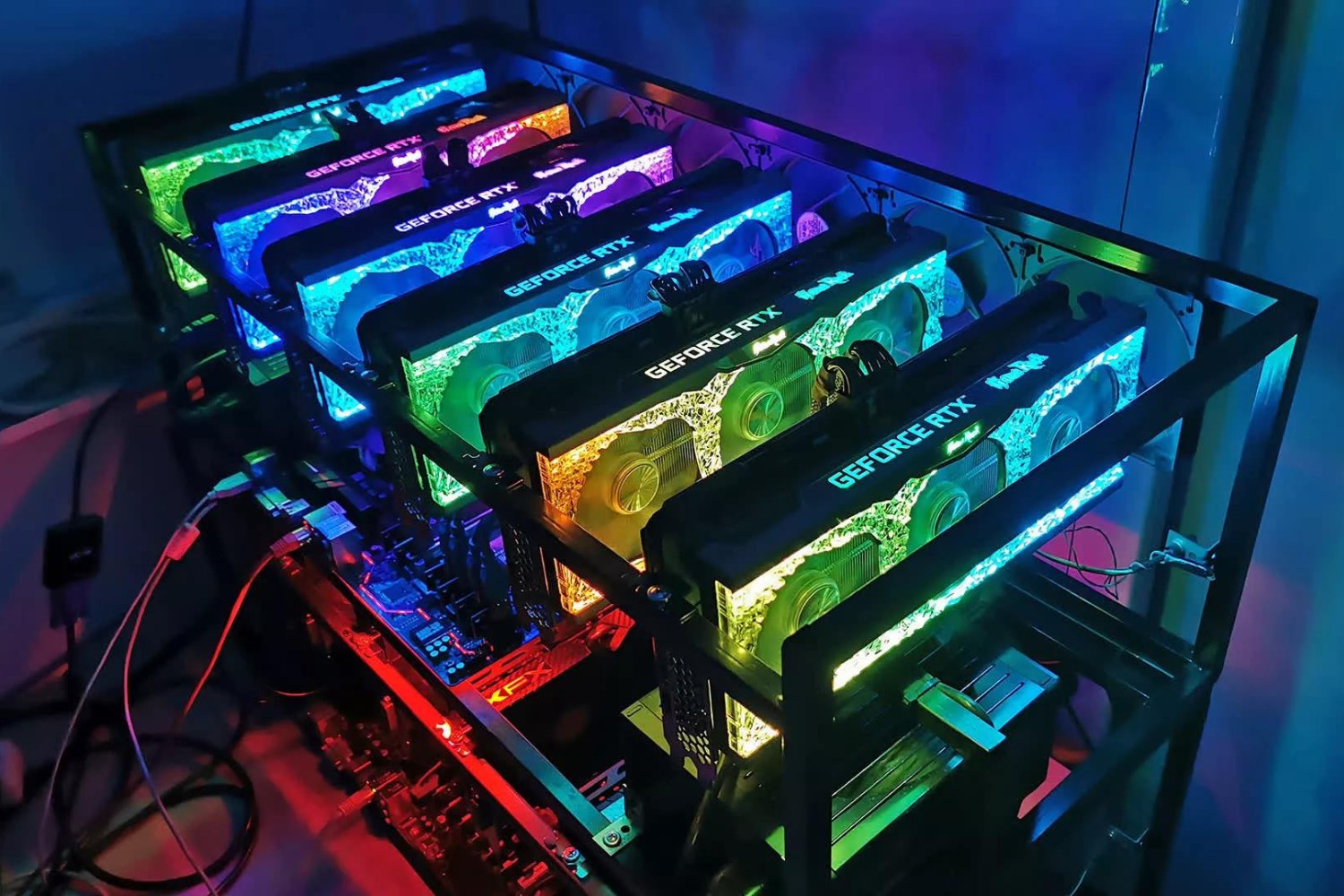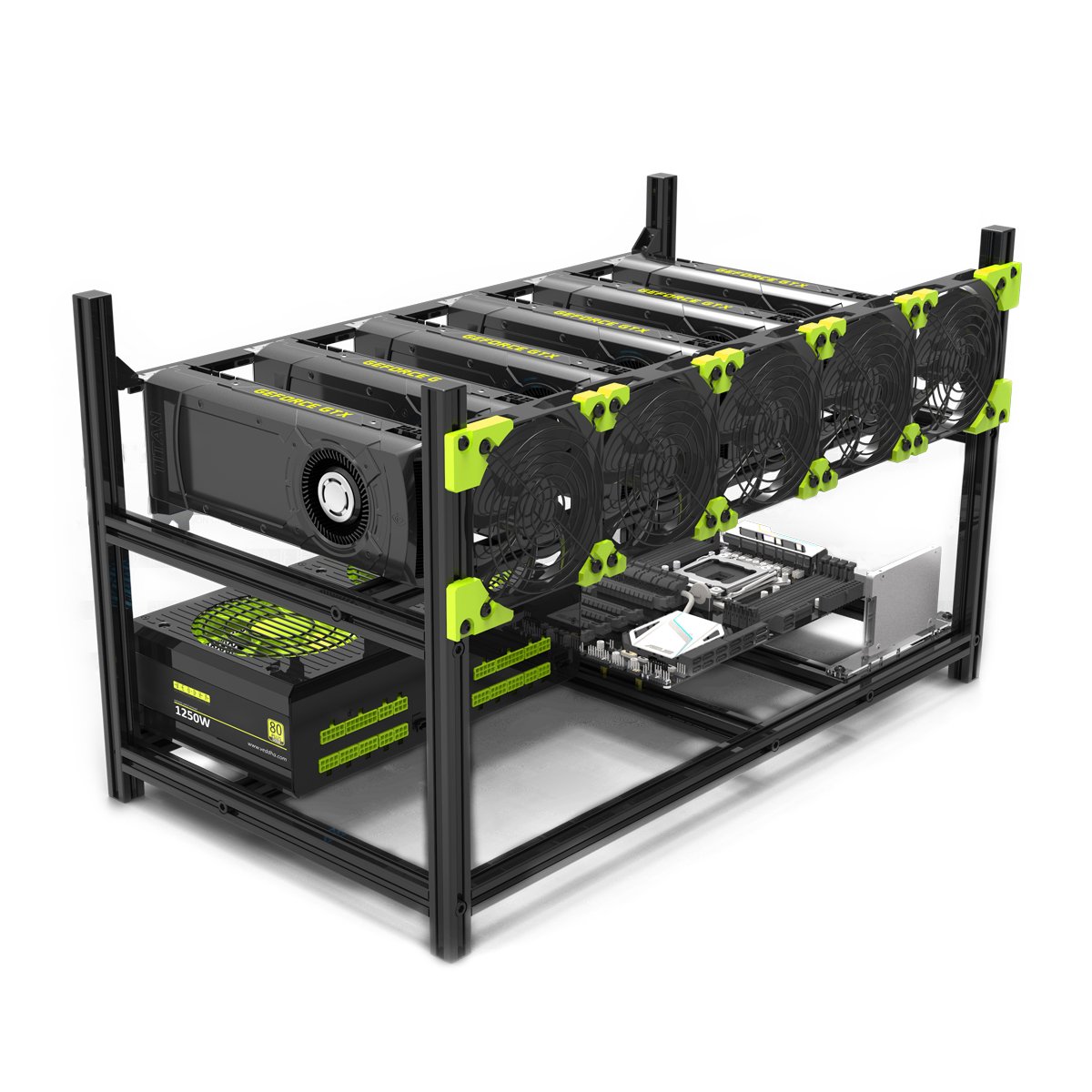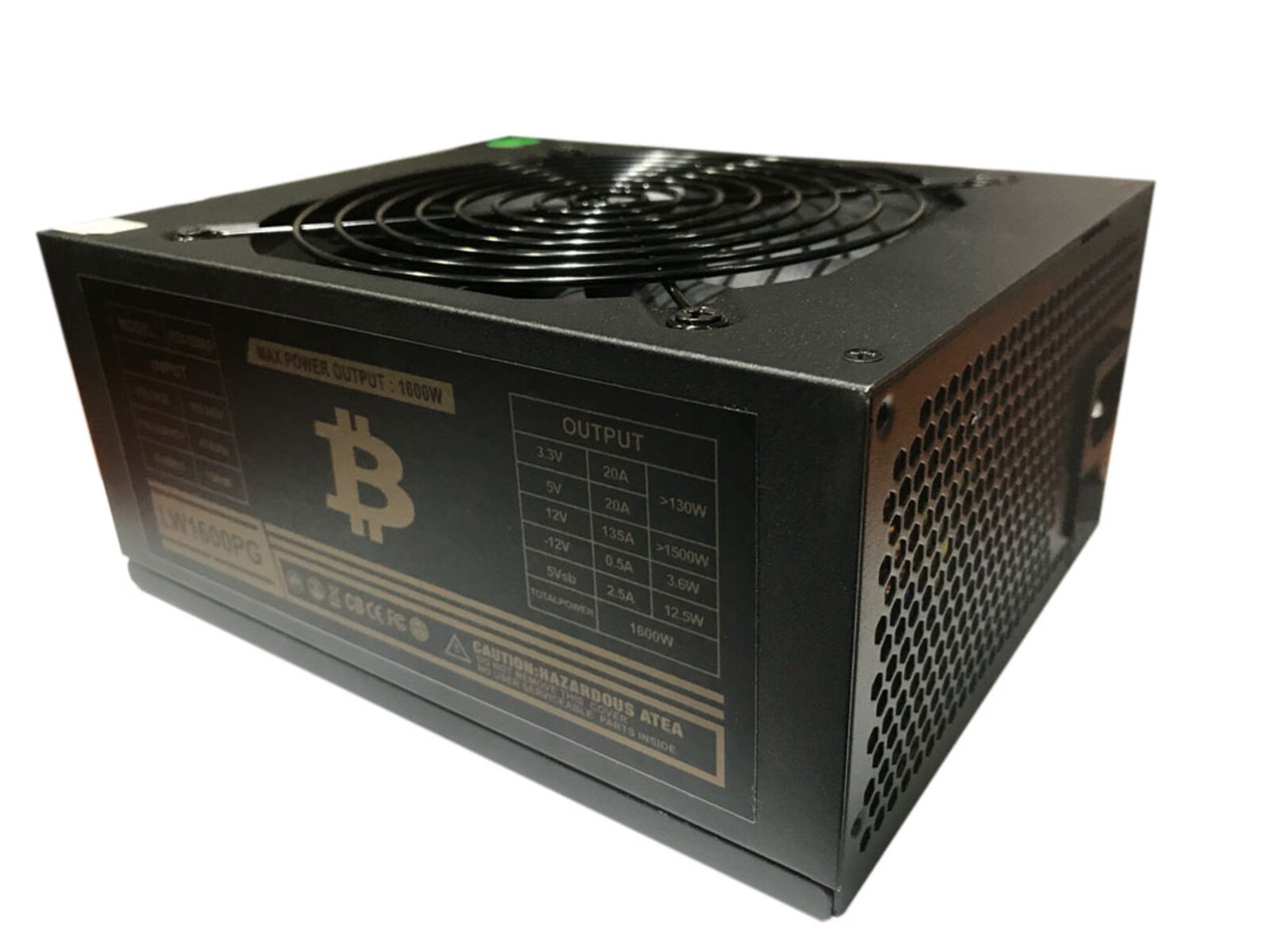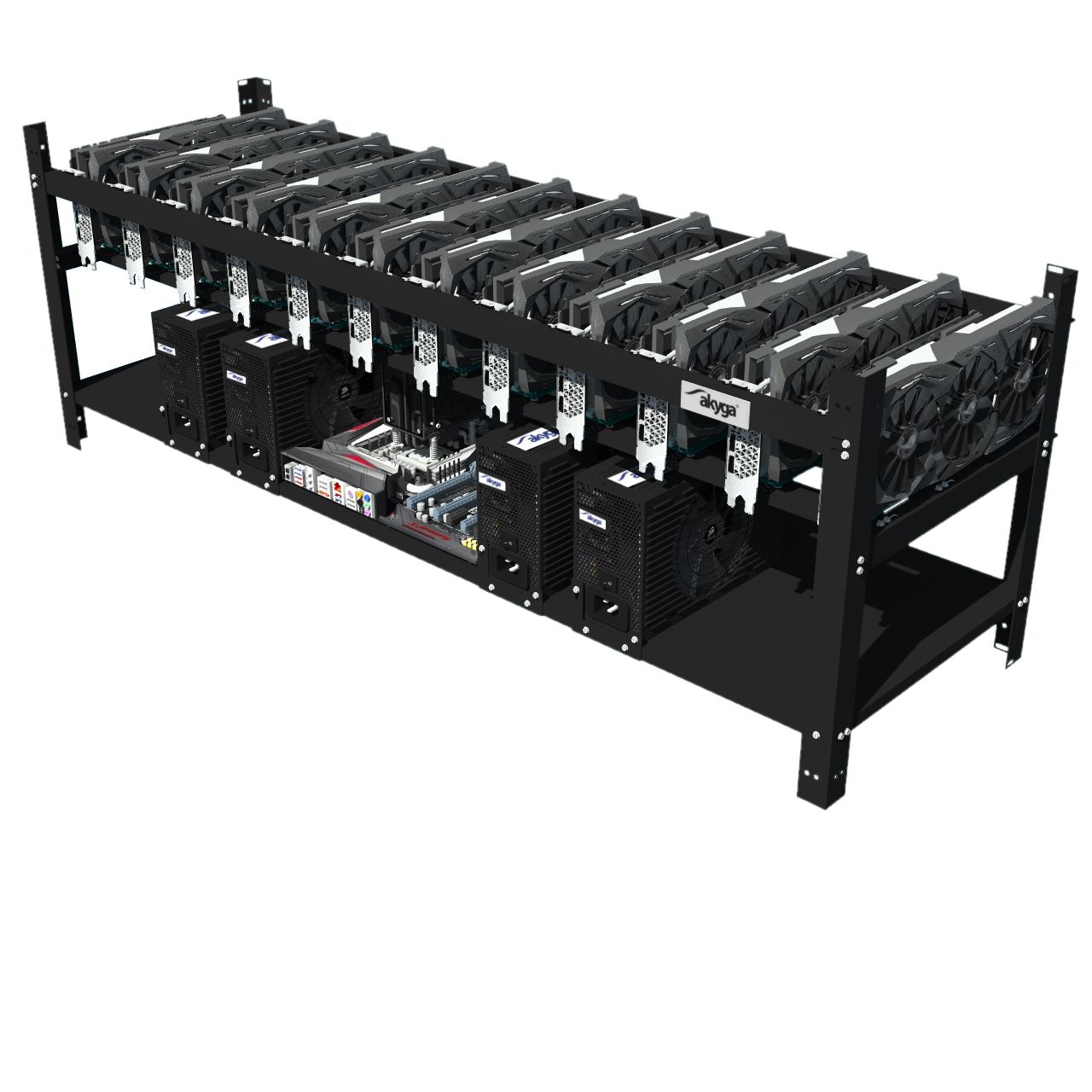Introduction
Cryptocurrency mining has become a popular method of acquiring digital currencies such as Bitcoin and Ethereum. As more people enter the world of cryptocurrencies, the demand for mining hardware and techniques continues to grow.
At the forefront of the mining world are GPUs (Graphics Processing Units), which play a crucial role in the process. GPUs offer significant advantages over traditional CPUs (Central Processing Units) when it comes to mining cryptocurrencies.
In this article, we will explore the reasons behind the use of GPUs in cryptocurrency mining. We will delve into the advantages and benefits that GPUs bring to miners, as well as the potential challenges and limitations associated with their use.
Furthermore, we’ll discuss the impact of GPU mining on the gaming industry, as these powerful units were initially designed for graphics-intensive gaming applications. Finally, we’ll take a look into the future of cryptocurrency mining with GPUs.
Whether you are an avid cryptocurrency investor, a tech enthusiast, or simply curious about the world of digital currencies, understanding the role GPUs play in mining is essential.
So, let’s dive in and explore the fascinating world of cryptocurrency mining with GPUs.
What is cryptocurrency mining?
Cryptocurrency mining refers to the process of verifying and adding new transactions to a blockchain network, which is the underlying technology behind popular digital currencies like Bitcoin and Ethereum. Miners are responsible for solving complex mathematical problems to validate transactions and secure the network.
Miners use powerful computer systems to compete against each other in solving these mathematical puzzles. Once a miner successfully solves a puzzle, they are rewarded with a certain amount of cryptocurrency as well as transaction fees.
The decentralized nature of cryptocurrencies requires a consensus mechanism to ensure the integrity and security of the transactions. The mining process serves as this consensus mechanism, as it enforces the rules of the blockchain and prevents fraudulent transactions.
Each cryptocurrency operates on a different mining algorithm. Bitcoin, for example, uses the Proof-of-Work (PoW) algorithm, where miners must invest computational power to find a specific hash value. Ethereum, on the other hand, is transitioning to a Proof-of-Stake (PoS) algorithm, where miners are chosen to validate transactions based on the amount of cryptocurrency they hold.
While mining cryptocurrencies can be profitable, it requires substantial computing power and energy consumption. This is where GPUs come into play.
Gone are the days when mining could be done with a regular CPU. Nowadays, miners rely on the immense computational power of GPUs to efficiently mine cryptocurrencies.
Next, we will explore the reasons why miners prefer using GPUs over CPUs for cryptocurrency mining.
The role of GPUs in cryptocurrency mining
Graphics Processing Units (GPUs) have revolutionized the world of cryptocurrency mining. Originally designed for rendering complex graphics in video games, GPUs have proven to be highly efficient and powerful tools for mining digital currencies.
Unlike Central Processing Units (CPUs), which are more general-purpose processors, GPUs are specifically optimized for parallel processing. This means they can perform multiple tasks simultaneously, making them ideal for solving the mathematical puzzles involved in cryptocurrency mining.
The primary role of GPUs in mining is to perform the complex computations required to validate transactions and secure the blockchain network. Miners utilize their GPU’s processing power to search for the correct hash value that satisfies the specific mining algorithm requirements.
Due to the nature of cryptocurrency mining, which involves repetitive calculations, GPUs excel in handling these tasks efficiently. With hundreds or even thousands of cores, GPUs can tackle these calculations in parallel, significantly increasing mining performance.
Moreover, GPUs have a high memory bandwidth, allowing them to quickly access the necessary data for mining operations. This enables miners to process a large number of transactions in a relatively short amount of time.
Another critical aspect of GPU mining is the ability to customize and optimize their performance. Miners can adjust various parameters, such as clock speeds and voltages, to find the optimal balance between power consumption and mining efficiency.
GPUs also play a vital role in maintaining network security. The computation-intensive nature of mining makes it more difficult for malicious actors to launch attacks on the blockchain network. The decentralized nature of cryptocurrencies, combined with the widespread use of GPUs, creates a robust and secure mining ecosystem.
Overall, GPUs have become the go-to choice for cryptocurrency miners due to their exceptional computational power, parallel processing capabilities, and ability to handle complex mathematical calculations. In the next section, we will delve deeper into the advantages and benefits of using GPUs for mining.
Why do miners use GPUs instead of CPUs?
When it comes to cryptocurrency mining, miners have predominantly shifted their focus from using CPUs (Central Processing Units) to GPUs (Graphics Processing Units). There are several compelling reasons why GPUs have become the preferred choice for mining digital currencies:
1. Superior computational power and parallel processing: GPUs are designed with a large number of cores and high clock speeds, allowing them to perform massive amounts of calculations simultaneously. This parallel processing capability gives GPUs a significant edge over CPUs when it comes to mining cryptocurrencies. Tasks that would take CPUs a significant amount of time to complete can be done much faster with GPUs.
2. Energy efficiency and cost-effectiveness: GPUs are far more energy-efficient compared to CPUs, making them more cost-effective for mining. GPUs are designed to handle intensive tasks efficiently, resulting in lower power consumption per calculation. This lower energy consumption translates to reduced electricity costs for miners, maximizing their profitability in the long run.
3. Support for complex mathematical calculations: Cryptocurrency mining involves solving complex mathematical puzzles. GPUs excel at handling these calculations due to their architecture optimized for floating-point operations. CPUs, on the other hand, are more suited for general-purpose computing, lacking the specialized capabilities that GPUs offer for mining purposes.
4. Availability and affordability: GPUs are widely available in the market and come at relatively affordable prices compared to other specialized mining hardware. This accessibility makes it easier for miners to acquire the necessary equipment to start mining cryptocurrencies.
5. Compatibility with mining software: The majority of mining software and algorithms are developed and optimized for GPU mining. Miners can take advantage of this compatibility to effectively mine various cryptocurrencies and maximize their earnings.
It is important to note that while GPUs offer significant advantages over CPUs for mining cryptocurrencies, there are some limitations to consider. GPUs consume more power compared to CPUs, and their effectiveness diminishes as mining difficulties increase. Additionally, GPUs may require more specialized cooling systems to prevent overheating during intensive mining operations.
Overall, the combination of superior computational power, energy efficiency, cost-effectiveness, and compatibility with mining software makes GPUs the preferred choice for miners in the cryptocurrency mining ecosystem.
Advantages and benefits of using GPUs for mining
Using Graphics Processing Units (GPUs) for cryptocurrency mining offers several advantages and benefits over other mining hardware options. Let’s explore some of the key advantages that make GPUs the preferred choice for miners:
1. Superior computational power: GPUs are equipped with a large number of processing cores and high clock speeds, allowing them to perform complex calculations at a much faster rate compared to other mining hardware. This computational power enables miners to solve mathematical puzzles and validate transactions more efficiently.
2. Parallel processing capability: GPUs are optimized for parallel processing, meaning they can handle multiple tasks simultaneously. This is particularly beneficial in mining, as it allows miners to process a higher number of calculations in a shorter amount of time. As a result, miners using GPUs can mine cryptocurrencies more efficiently and increase their overall mining performance.
3. Energy efficiency: Despite their powerful performance, GPUs are relatively energy-efficient compared to other mining hardware. They are designed to strike a balance between performance and power consumption, ensuring that miners can maximize their mining profits while keeping electricity costs in check.
4. Flexibility and versatility: GPUs are not limited to a specific cryptocurrency or mining algorithm. They can be used to mine a wide range of digital currencies, making them a versatile option for miners. This flexibility allows miners to adapt to changing market conditions and explore different cryptocurrencies, maximizing their opportunities for profitability.
5. Wide availability and affordability: Compared to specialized mining hardware, GPUs are widely available and more affordable. This accessibility makes it easier for miners to enter the mining ecosystem and acquire the necessary equipment to get started. Additionally, the widespread use of GPUs also means that there is an extensive community of miners and developers providing support and resources.
6. Resale value: GPUs hold their resale value better than other mining hardware options. This is because GPUs have applications beyond mining, such as gaming and graphic design. When miners decide to upgrade their mining equipment, they can sell their used GPUs at a relatively high resale price, minimizing their investment loss.
Overall, the advantages and benefits of using GPUs for mining, including superior computational power, parallel processing capability, energy efficiency, flexibility, availability, and resale value, make them the preferred choice for many cryptocurrency miners.
Superior computational power and parallel processing
One of the significant advantages of using Graphics Processing Units (GPUs) for cryptocurrency mining is their superior computational power and parallel processing capability. Unlike traditional mining hardware, GPUs are specifically designed to handle complex calculations and perform tasks in parallel, making them highly efficient for mining purposes.
GPUs consist of numerous processing cores, often numbering in the hundreds or thousands, allowing for massive parallelization of computations. This means that GPUs can simultaneously perform multiple calculations and tasks, significantly accelerating the mining process compared to other mining hardware options.
By leveraging the parallel processing capabilities of GPUs, miners can process thousands of hash calculations simultaneously, dramatically increasing the mining speed and efficiency. The ability to handle a large number of calculations simultaneously is particularly advantageous in cryptocurrency mining, where the algorithms are primarily based on cryptographic hash functions.
Parallel processing allows miners to divide the computational workload across multiple processing units in a GPU, enabling them to solve complex mathematical problems more quickly. This results in higher mining performance and increased chances of successfully mining a block.
Furthermore, the parallel processing nature of GPUs also provides an advantage in terms of adaptability. Miners can optimize and fine-tune mining software to fully utilize the processing power available in each GPU core. By effectively distributing the computational load, miners can achieve optimal performance and maximize their mining rewards.
Another aspect of GPUs that contributes to their superior computational power is their high clock speeds. GPUs are designed to operate at significantly higher frequencies compared to CPUs, enabling them to execute calculations at a faster rate. This faster processing speed allows miners to complete more calculations and transactions in a given timeframe, increasing their overall efficiency.
Overall, the combination of superior computational power and parallel processing capability makes GPUs an ideal choice for cryptocurrency mining. The ability to handle a massive number of calculations simultaneously, combined with high clock speeds, allows miners to solve complex mathematical problems efficiently and improve their mining performance.
Energy efficiency and cost-effectiveness
Energy efficiency is a crucial factor to consider when it comes to cryptocurrency mining, and Graphics Processing Units (GPUs) have proven to be more energy-efficient compared to other mining hardware options. This energy efficiency translates into cost-effectiveness for miners, allowing them to maximize their profits.
GPUs are designed to strike a balance between performance and power consumption. Unlike traditional Central Processing Units (CPUs), which are more versatile but consume more power, GPUs are optimized for parallel processing and are better suited for mining purposes. This specialized design allows GPUs to perform a higher number of calculations per watt of power consumed, resulting in improved energy efficiency.
Energy efficiency is particularly important in cryptocurrency mining, as the mining process involves performing intensive calculations continuously. The lower power consumption of GPUs means lower electricity costs for miners, resulting in higher profitability. Miners can mine for longer periods without experiencing excessive energy expenses, maximizing their return on investment.
Additionally, the energy efficiency of GPUs also has a positive impact on the environmental aspect of mining. With the growing concern for sustainable and eco-friendly practices, using energy-efficient GPUs helps reduce the carbon footprint associated with mining operations.
Cost-effectiveness is another significant advantage of using GPUs for mining. GPUs are more affordable compared to specialized mining hardware options, making them accessible to a wider range of miners. The lower upfront cost of GPUs allows miners to enter the mining ecosystem without incurring significant initial expenses.
Furthermore, as the mining difficulty increases and new, more efficient mining hardware is developed, miners can easily upgrade their GPU setups. A major advantage in terms of cost-effectiveness is that used GPUs retain a substantial resale value. This means that miners can recoup a significant portion of their investment when upgrading to newer GPU models, reducing the overall cost of mining.
Overall, the energy efficiency and cost-effectiveness of GPUs make them an attractive choice for cryptocurrency miners. The reduced power consumption and lower initial investment costs enable miners to optimize their profitability and make mining more accessible to a broader range of individuals and businesses.
Support for complex mathematical calculations
Graphics Processing Units (GPUs) are renowned for their ability to support and excel in complex mathematical calculations, which makes them an ideal choice for cryptocurrency mining. The architecture and design of GPUs are optimized to handle the intricate calculations required in mining digital currencies.
Cryptocurrency mining involves solving complex mathematical puzzles, typically based on cryptographic hash functions. GPUs possess highly efficient floating-point operations capabilities, enabling them to handle the intensive mathematical computations involved in mining.
The parallel processing architecture of GPUs allows for simultaneous execution of multiple floating-point operations, significantly accelerating the mining process. These GPUs have hundreds or even thousands of cores, each capable of performing calculations independently. As a result, miners can process a vast number of calculations in a shorter period.
Moreover, GPUs support a variety of mathematical operations, such as matrix calculations and vector operations, making them versatile for different mining algorithms. For instance, some cryptocurrencies require matrix manipulation for mining, which GPUs are well-equipped to handle. The ability of GPUs to perform these operations efficiently and in parallel contributes to faster and more effective mining.
Furthermore, GPUs are highly programmable, allowing miners to optimize their mining software for specific mining algorithms. Miners can take advantage of this flexibility to implement specialized mathematical computations tailored to the requirements of the cryptocurrency they are mining. By leveraging the computational capabilities of GPUs, miners can enhance the efficiency and effectiveness of their mining operations.
GPUs also provide a significant advantage in tackling the complexity of cryptographic algorithms. Cryptocurrencies utilize various cryptographic algorithms, such as SHA-256 and Scrypt, in their mining processes. GPUs are designed to handle these algorithms efficiently, utilizing their parallel processing power to quickly compute the necessary hash values required for mining.
The combination of GPU’s support for complex mathematical calculations, their parallel processing architecture, and programmability makes them an ideal choice for cryptocurrency mining. Miners can rely on GPUs to efficiently handle the intricate computations involved in validating transactions and securing the blockchain network.
The impact of GPU mining on the gaming industry
The rise of cryptocurrency mining, particularly the utilization of Graphics Processing Units (GPUs), has had a significant impact on the gaming industry. GPUs, originally designed for graphics-intensive gaming applications, have become a vital component for cryptocurrency miners, causing both positive and negative effects on the gaming ecosystem.
One of the notable impacts of GPU mining on the gaming industry is the increased demand for high-performance GPUs. As miners require powerful GPUs to efficiently mine cryptocurrencies, the demand for these graphics cards has surged. This has affected the availability and pricing of GPUs, making it more challenging for gamers and PC enthusiasts to acquire these devices for gaming purposes.
Furthermore, the high demand for GPUs from miners has led to an increase in GPU prices, sometimes making them unaffordable for casual gamers. This has created a competitive environment where gamers have to scramble to purchase GPUs or settle for more expensive alternatives.
On the other hand, the increased demand for GPUs has also incentivized manufacturers to innovate and develop more advanced and powerful graphics cards. Gaming-focused GPUs have benefited from the advancements in technology driven by the demand from miners. As a result, gamers have access to cutting-edge graphics cards that deliver exceptional gaming performance.
Moreover, the revenue generated by GPU manufacturers from the mining industry has contributed to research and development investments. These investments have propelled advancements in GPU technology, benefiting not only cryptocurrency miners but also the gaming community as a whole.
Another impact of GPU mining on the gaming industry is the potential strain it places on power supplies and cooling systems. Mining operations are highly intensive and require GPUs to operate at full capacity over extended periods. This can lead to increased power consumption and higher temperatures, potentially affecting overall system stability and longevity.
However, the impact of GPU mining on the gaming industry is not solely negative. GPU mining has also fostered a community of tech-savvy individuals who are passionate about building high-performance systems. This community shares knowledge, collaborates, and contributes to the gaming industry by pushing the boundaries of hardware capabilities and optimizing gaming experiences.
In summary, the impact of GPU mining on the gaming industry is multifaceted. While there are challenges such as GPU availability and pricing, there are also positive aspects such as technological advancements and community collaboration. As the cryptocurrency landscape continues to evolve, it is crucial for GPU manufacturers, miners, and gamers to find a balance that supports both industries and allows for innovation and growth.
Challenges and limitations of GPU mining
While Graphics Processing Unit (GPU) mining offers numerous benefits for cryptocurrency miners, it also comes with its fair share of challenges and limitations. These factors need to be considered when engaging in GPU mining. Let’s explore some of the primary challenges:
1. Power consumption and heat generation: GPU mining can be power-hungry, leading to increased electricity costs. The intense computational workload of mining operations can cause GPUs to generate a significant amount of heat. Proper cooling systems must be in place to prevent overheating, which can impact the overall stability and lifespan of the GPUs.
2. GPU availability and pricing: The high demand for GPUs from both miners and gamers has led to shortages in the market and increased prices. Miners often compete with gamers for limited GPU stocks, making it challenging for gamers to obtain the desired graphics cards.
3. Mining difficulty and network competition: As more miners join the network, the mining difficulty increases, making it harder to mine cryptocurrencies. The increased competition for block rewards decreases the individual miner’s likelihood of successfully mining a block and receiving rewards.
4. Currency volatility and profitability: The value of cryptocurrencies can be highly volatile, impacting the profitability of mining operations. Fluctuations in market prices can affect returns on investment, as mining rewards are often denominated in the mined cryptocurrency.
5. Environmental impact: The energy consumption associated with mining, including GPU mining, has raised concerns about its environmental impact. The electricity required to power mining operations contributes to carbon emissions and energy consumption on a global scale.
It’s important to note that GPU mining has some inherent limitations:
1. ASIC resistance: Certain cryptocurrencies, such as Bitcoin, have developed specialized mining hardware called Application-Specific Integrated Circuits (ASICs) that are specifically designed for efficient mining. GPU mining can become less competitive or less efficient when faced with the highly specialized and more powerful ASIC miners.
2. Space and infrastructure requirements: Setting up a mining rig with multiple GPUs requires a significant amount of space and proper infrastructure. Miners need to consider factors such as sufficient power supply, cooling systems, and adequate ventilation to ensure the smooth operation of their mining setups.
3. Upfront investment and maintenance: Building a GPU mining rig can involve a significant upfront investment. Miners need to consider the costs of purchasing multiple GPUs, associated hardware components, and ongoing maintenance expenses to keep the mining equipment in optimal condition.
Despite the challenges and limitations, many miners still find GPU mining to be a viable and profitable option. However, it is essential for miners to carefully assess and plan their mining operations, considering the potential challenges and mitigating risks to optimize their mining experience.
The future of cryptocurrency mining with GPUs
The future of cryptocurrency mining with Graphics Processing Units (GPUs) is subject to several factors that will shape the landscape of this industry. As the technology continues to evolve, let’s explore some key aspects that may influence the future of GPU mining:
1. Mining algorithm advancements: Cryptocurrencies are exploring new consensus algorithms beyond Proof-of-Work (PoW), such as Proof-of-Stake (PoS) and Proof-of-Capacity (PoC). These alternative algorithms aim to reduce energy consumption and increase scalability. As cryptocurrencies transition to these algorithms, the demand for GPU mining may decrease for those specific cryptocurrencies.
2. GPU innovations: GPU manufacturers are constantly striving to improve their products for both gaming and mining purposes. Innovations in GPU technology, such as increased efficiency, higher memory capacities, and enhanced cooling systems, can further optimize the performance and profitability of GPU mining.
3. Specialized mining hardware: While GPUs have been the go-to choice for mining, specialized mining hardware like Application-Specific Integrated Circuits (ASICs) and Field-Programmable Gate Arrays (FPGAs) continue to advance. These purpose-built mining devices offer even higher hash rates, energy efficiency, and lower power consumption, potentially challenging the dominance of GPUs in the mining industry.
4. Cryptocurrency regulatory landscape: Regulations around cryptocurrencies and mining can have a significant impact on the future of GPU mining. Governments and regulatory bodies may introduce policies that affect mining operations, such as energy consumption regulations or stricter taxation on mining profits. These regulations can impact the cost-effectiveness and feasibility of GPU mining.
5. Shifts in cryptocurrency popularity: As new cryptocurrencies emerge and gain popularity, the demand for GPU mining may fluctuate. Different cryptocurrencies have different mining requirements and algorithms. Miners may shift their focus and adapt to mining cryptocurrencies that offer more favorable conditions for GPU mining, such as lower mining difficulty or ASIC resistance.
6. Sustainable mining practices: With increasing concerns about the environmental impact of mining, including GPU mining, the industry may see a greater emphasis on sustainable mining practices. Miners might explore renewable energy sources and impact-reducing measures to create a more eco-friendly mining ecosystem.
As the world of cryptocurrencies continues to evolve, the future of GPU mining remains intriguing and dynamic. While challenges and advancements in technology may shape the industry, GPUs are likely to remain relevant due to their versatility, availability, and ongoing innovations. Miners will need to adapt, leveraging new opportunities and technologies to stay competitive in the ever-changing landscape of cryptocurrency mining.
Conclusion
Cryptocurrency mining with Graphics Processing Units (GPUs) has revolutionized the digital currency landscape, offering miners efficient and powerful tools to validate transactions and secure blockchain networks. The use of GPUs in mining has transformed the way cryptocurrencies are produced, with miners benefitting from superior computational power, parallel processing capabilities, and support for complex mathematical calculations.
While there are challenges associated with GPU mining, such as energy consumption, availability, and pricing, the benefits outweigh the limitations. GPUs offer energy efficiency and cost-effectiveness, allowing miners to maximize their profits while maintaining a smaller environmental footprint.
The impact of GPU mining on the gaming industry has been both positive and negative. While high demand and pricing can affect availability for gamers, it has also driven technological advancements, benefiting both miners and the gaming community by offering more powerful graphics cards.
Looking ahead, the future of GPU mining will be influenced by factors such as mining algorithm advancements, GPU innovations, regulatory landscapes, shifts in cryptocurrency popularity, as well as the adoption of sustainable mining practices.
As the industry evolves, miners will need to adapt to changes, balancing profitability and sustainability. Furthermore, continued collaboration between GPU manufacturers, miners, and the gaming industry will foster advancements in technology and support the growth and development of both sectors.
As cryptocurrencies continue to gain popularity and evolve, GPU mining remains a prominent and integral part of the mining ecosystem. The specialized capabilities of GPUs make them a crucial tool for miners, contributing to the security and integrity of blockchain networks.
With the ever-changing landscape of cryptocurrencies and mining technologies, it is important to stay informed and adapt to the new opportunities and challenges that arise. Whether you are a miner, investor, or simply curious about the world of cryptocurrencies, understanding the role of GPUs in mining is foundational to navigating this exciting and dynamic industry.

























